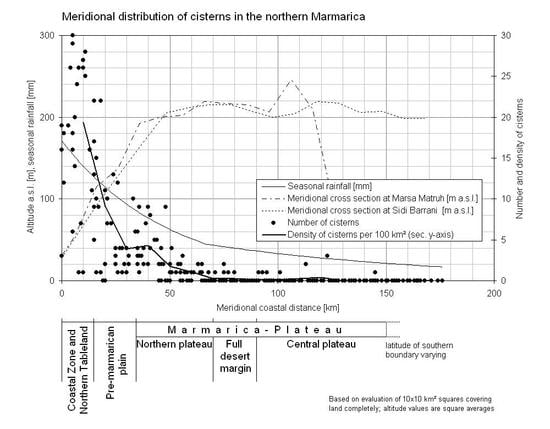‘Un-Central’ Landscapes of NE-Africa and W-Asia—Landscape Archaeology as a Tool for Socio-Economic History in Arid Landscapes
Abstract
:1. Landscape Archaeology and Central Place Theory
2. Thinking ‘Un-Centrally’—Where to Start and What to Ask
- Resources: limited availability of the resource water and soil
- Climate: high temperatures with high day-night variability, high evaporation rates
- Vegetation: steppe to concentrated to no vegetation
- Population: sparsely populated areas
- Economy: limited economical potential
- Resources: limited availability of or access to resources
- Life strategies: spatial and habitational (for humans social) and temporal niches
- Population: little access and/or participation in larger networks, political power, and cultural institutions
- Economy: limited economical potential
3. Marginality Reconsidered
3.1. Marginality—A Concept to be Differentiated
3.2. Weak and Strong Ties and the Study of Marginal Areas
4. Marmarica and Hauran in Graeco-Roman Times: Two Arid Regions—But Are They Marginal Regions?
5. Looking for Agents and Interactions in the Landscape on a Regional Scale
5.1. Hauran
5.2. Marmarica
6. Conclusions
- Un-central ≠ unimportant ≠ no potentialThe case studies presented non-central areas when seen from the perspective of the Graeco-Roman Mediterranean. They were/are marginal in the sense that they were characterized by ecological marginality (arid environment) and economic marginality, which is associated with social and political marginality. However, the studies demonstrate a strong position in a network of relationships, and also an economic potential that was considerable in relation to ecological conditions, and the yielded surpluses.
- Un-central = not site-oriented, but area-orientedMethodologically, thinking in un-central terms helps viewing historical phases, cultural phenomena, or economic relationships using a non-site-oriented method. Landscape archaeological, area-oriented approaches should be much more relevant in research design to go beyond the fixation on sites. In the case of Hauran, the area- and relationships-oriented approach, as presented here, can better explain the settlement pattern of the region, where research ‘sticks’ to villages and their temple buildings. In Marmarica, only an area-oriented view provides results due to the large areas with which habitational areas were connected in order to receive water.
- Un-central = marginal = sensitive and resilient = historically of interestEspecially in ecologically (and economically) marginal areas, the sensitivity and can be more pronounced and recognizable than in ecologically well-suited regions. In regions at the margins, inhabitants were used to a fragile balance, to good and bad years, to necessarily adapting to scarce or overly abundant resources. Hence, in the case of Hauran and Marmarica, climatic changes or crises, political developments, and modifications in economic relationships could either have strong and fast effects due to the fragile situation, or could not affect areas and people according to their abilities to more easily and quickly adapt to changing situations. For this reason, the evidence from (arid) marginal regions can reflect larger (global in the sense of the MENA-region) historical developments, which are not easily visible in areas of complex, dense, and politically biased sources. The socio-economic (and socio-religious) history of marginal regions can archaeologically appear in a better resolution of contexts, findings, remains, and soil.
- Un-central ≠ no complex interdependencies (people, resources, spaces)An un-central approach to the study of past societies and economical systems is suitable for gaining insights into the complex interdependencies of people, resources, spaces, and political or natural changes. Investigating marginal areas of Marmarica and Hauran offers insights into the complexity and the connectivity, provided that we accept different ways of living, such as mobile life-strategies, the particularities of communities and individuals involved in trade interactions. These are methodologically difficult to grasp but are not marginal players in marginal regions.
- Un-central areas = marginal, but from two sides = areas ‘in-between’Un-central areas, as presented in the two case studies, are zones in-between politically and economically often more powerful areas. Their role as buffers, areas of contact (trade) but also of conflict (control, war), is of significance for political and economic balance. Both Hauran and Marmarica—though not the main issue in this contribution—played a mediating role in Graeco-Roman history and beyond. Yet, acknowledging the other side of the margin is as enlightening as the area-oriented approach outlined above.
- Un-central = temporal shifts in degrees of centralityPlaces can change their centrality in the course of, for example, an agricultural period. Temporal shifts and oscillations should be considered when determining the centrality of places. This methodologically challenging point adds more fluidity to a rather stable concept. The cases of Hauran and Marmarica started from water, which is a fluid and not a regularly available resource. As such, the approach considers the changing status of places and the multiple roles. A place receiving water is also a redistributor (Soada). Political central places like Bostra were highly dependent on a huge area. Which places were more central has to be answered in a differentiated way by investigating their web of relationships. A temporarily changing use and varying degrees of places being frequented, according to economic flows of harvest, or periods of processing goods, and best times for trading goods, can be postulated in Marmarica. Cisterns along routes, potters’ workshops, and harbor sites were not continuously central on the respective scale.
- Un-central areas ≠ not deprived of centersThe definition of a what is perceived as the center should be clearly explained in every single study, depending on the material categories and the scales being examined, and should be integrated into an interpretation. The centers in both Marmarica and Hauran are those with a high concentration of functionalities and features, of people and power—even if they were not perceived as such all year round. Yet, their position in the overall socio-economic or socio-religious organization varied.
Funding
Acknowledgments
Conflicts of Interest
References
- Christaller, W. Die Zentralen Orte in Süddeutschland—Eine ökonomisch-Geographische Untersuchung über die Gesetzmäßigkeiten der Verbreitung und Entwicklung der Siedlungen mit Städtischer Funktion; Gustav Fischer: Jena, Germany, 1933; (English Translation: Christaller, W. Central Places in Southern Germany; Prentice-Hall: Englewood Cliffs, NJ, USA, 1966). [Google Scholar]
- Beilharz, D.; Krauße, D.L. (Eds.) “Fürstensitze” und Zentralorte der frühen Kelten: Abschlusskolloquium des DFG-Schwerpunktprogramms 1171 in Stuttgart, 12.-15. Oktober 2009; Forschungen und Berichte zur Vor- und Frühgeschichte in Baden-Württemberg, 120; Theiss: Stuttgart, Germany, 2010. [Google Scholar]
- Ettel, P.; Werther, L. Zentrale Orte und zentrale Räume des Frühmittelalters in Süddeutschland- Tagung des RGZM und der Friedrich-Schiller-Universität Jena vom 07.-09.10.2012 in Bad Neustadt an der Saale; Schnell Steiner: Regensburg, Germany, 2013. [Google Scholar]
- Taylor, P.J.; Hoyler, M.; Verbruggen, R. External Urban Relational Process: Introducing Central Flow Theory to Complement Central Place Theory. Urban Stud. 2010, 47, 2803–2818. [Google Scholar] [CrossRef] [Green Version]
- DeMarco, M.; Matusitz, J. The Impact of Central-Place Theory on Wal-Mart. J. Hum. Behav. Soc. Environ. 2011, 21, 130–141. [Google Scholar] [CrossRef]
- Renfrew, C. Trade as action at a distance: Questions of integration and communication. In Ancient Civilization and Trade; Sabloff, J.A., Lamber-Karlovsky, C.C., Eds.; University of New Mexico Press: Albuquerque, NM, USA, 1975. [Google Scholar]
- Cunliffe, B.; Keay, S. (Eds.) Social Complexity and the Development of towns in Iberia: From the Copper Age to the Second Century AD; Oxford University Press: Oxford, UK, 1995. [Google Scholar]
- Müller, U. Zentrale Orte und Netzwerke. Zwei Konzepte zur Beschreibung von Zentralität. In Zwischen Fjorden und Steppe. Festschrift Johan Callmer zum 65. Geburtstag; International Archäologie—Studia Honoraria 31; Theune, C., Biermann, F., Struwe, R., Jeute, G.H., Eds.; Verlag Marie Leidorf: Rahden/Westfalen, Germany, 2010; pp. 57–67. [Google Scholar]
- Nakoinz, O. Zentralortforschung und zentralörtliche Theorie. Archäol. Korrespondenzblatt 2009, 39, 361–380. [Google Scholar]
- Aston, M.; Rowley, T. Landscape Archaeology: An Introduction to Fieldwork Techniques on Post-Roman Landscape; David and Charles: London, UK, 1974. [Google Scholar]
- Hodder, I.; Orton, C. Spatial Analysis in Archaeology; Cambridge University Press: Cambridge, UK, 1976. [Google Scholar]
- Butzer, L.W. Archaeology as Human Ecology: Method and Theory for a Contextual Approach; University Press: Cambridge, UK, 1982. [Google Scholar]
- McFadyen, L. Building and Architecture as Landscape Practice. In Handbook of Landscape Archaeology; David, B., Thomas, J., Eds.; Left Coast Press: Walnut Creek, CA, USA, 2008; pp. 307–314. [Google Scholar]
- Ashmore, W.; Knapp, B. (Eds.) Archaeologies of Landscape: Contemporary Perspectives; Blackwell: Oxford, UK, 1999. [Google Scholar]
- Ucko, P.J.; Layton, R. (Eds.) The Archaeology and Anthropology of Landscape: Shaping Your Landscape; Routledge: London, UK, 1999. [Google Scholar]
- Casey, E.S. Place in Landscape Archaeology: A Western Philosophical Prelude. In Handbook of Landscape Archaeology; David, B., Thomas, J., Eds.; Left Coast Press: Walnut Creek, CA, USA, 2008; pp. 44–49. [Google Scholar]
- Strang, V. Uncommon ground: Landscapes as Social Geography. In Handbook of Landscape Archaeology; David, B., Thomas, J., Eds.; Left Coast Press: Walnut Creek, CA, USA, 2008; pp. 51–59. [Google Scholar]
- Casey, E.S. How to Get from Space to Place in a Fairly Short Stretch of Time. In Senses of Place; Feld, S., Basso, K., Eds.; SAR Press: Santa Fe, NM, USA, 1996; pp. 13–52. [Google Scholar]
- Bowman, A.; Wilson, A. Introduction. In Settlement, Urbanization, and Population; Bowman, A., Wilson, A., Eds.; Oxford University Press Collection: Oxford, UK, 2011; pp. 1–14. [Google Scholar]
- Latour, B. Recall of modernity: Anthropological approaches. Cult. Stud. Rev. 2007, 13, 30. [Google Scholar]
- Latour, B. On actor-network theory. A few clarifications plus more than a few complications. Soz. Welt 1996, 47, 369–381. [Google Scholar]
- Casey, D.A. On Actor-Network Theory and landscape. Area 2011, 43, 274–280. [Google Scholar] [CrossRef]
- Frevert, U. Passions, Preferences, and Animal Spirits How Does Homo Oeconomicus Cope with Emotions? In Science and Emotions after 1945: A Transatlantic Perspective; Biess, F., Gross, D.M., Eds.; Published to Chicago Scholarship Online: September 2014.
- Meyer, M. Is Homo Economicus a Universal Paradigm in Economic Theory? Ann. Econ. Financ. 2016, 17, 433–443. [Google Scholar]
- Ruffing, K. Neue Institutionenökonomik (NIÖ) und Antike Wirtschaft. In Antike Wirtschaft und ihre kulturelle Prägung. The Cultural Shaping of the Ancient Economy; Ruffing, K., Droß-Krüpe, K., Föllinger, S., Eds.; Harrasowitz Verlag: Wiesbaden, Germany, 2016; pp. 11–22. [Google Scholar]
- Bang, P.F. The Roman Bazaar: A Comparative Study of Trade and Markets in a Tributary Empire; Cambridge Classical Studies; Cambridge University Press: Cambridge, UK; New York, NY, USA, 2008. [Google Scholar]
- Ecosystems and human wellbeing. Desertification Synthesis; Millennium Ecosystem Assessment; World Resource Institute: Washington, DC, USA, 2005. [Google Scholar]
- Knitter, D.; Nakoinz, O. The Relative Concentration of Interaction—A Proposal for an Integrated Understanding of Centrality and Central Places. Land 2018, 7, 86. [Google Scholar] [CrossRef]
- Nakoinz, O.; Lüth, P. Hierarchien, Territorien und Zentren der Vorrömischen Eisenzeit. Prähistorische Z. 2018, 93, 121–143. [Google Scholar] [CrossRef]
- Lefebvre, H. La production de l’espace; Anthropos: Paris, France, 1974. [Google Scholar]
- Mehretu, A.; Pigozzi, B.W.; Sommers, L.M. Towards Typologies of Socio-Economic Marginality: North/South Comparisons. In Marginality in Space—Past, Present and Future: Theoretical and Methodological Aspects of Cultural, Social and Economical Parameters of Marginal and Critical Regions; Jussila, H., Majoral, R., Mutambirwa, C., Eds.; Ashgate Publishing Ltd.: Aldershot, UK; Brookfield, UK, 1999; pp. 7–24. [Google Scholar]
- Leimgruber, W. Marginality and Development Issues in Marginal Regions. In Marginality and Development Issues in Marginal Regions, Proceedings of the IGU Study Group ‘Development Issues in Marginal Regions’, Taipei, Taiwan, 1–7 August 1993; Chang, C.D., Lu, Y., Eds.; National Taiwan University: Taipei, Taiwan, 1994; pp. 1–18. [Google Scholar]
- Mehretu, A.; Pigozzi, B.W.; Sommers, L.M. Concepts in Social and Spatial Marginality. Geogr. Ann. Ser. B Hum. Geogr. 2000, 82, 89–101. [Google Scholar] [CrossRef]
- Déry, S.; Leimgruber, W.; Zsilincsar, W. Understanding Marginality: Recent Insights from a Geographical Perspective. Hrvat. Geogr. Glas. (Croat. Geogr. Bull.) 2012, 74, 5–18. [Google Scholar] [Green Version]
- Pelc, S. Marginality and Marginalization. In Societies, Social Inequalities and Marginalization: Perspectives on Geographical Marginality; Chand, R., Nel, E., Pelc, S., Eds.; Springer: New York, NY, USA, 2017; pp. 13–28. [Google Scholar]
- Meijers, E. From a central place to a network model: Theory and evidence of a paradigm change. Tijdschr. Econ. Soc. Geogr. 2007, 98, 245–259. [Google Scholar] [CrossRef]
- Bebermeier, W.; Beck, D.; Gerlach, I.; Klein, T.; Knitter, D.; Kohlmeyer, K.; Krause, J.; Marzoli, D.; Meister, J.; Müller-Neuhof, B. Ancient Colonization of Marginal Habitats. A Comparative Analysis of Case Studies from the Old World. eTopoi. J. Anc. Stud. 2016, 6, 1–44. [Google Scholar]
- Young, R.; Simmonds, T. Debating Marginality: Archaeologists on the Edge? In Making Places in the Prehistoric World: Themes in Settlement Archaeology; Brück, J., Goodman, M., Eds.; University College London Press: London, UK, 1999; pp. 198–211. [Google Scholar]
- Herva, V.-P.; Ikäheimo, J.P.; Hietala, M. Should the Marginal be classified? The Archaeology of Muhos Palokangas, Northern Ostrobothnia (Finland). Acta Archaeol. 2005, 75, 15–25. [Google Scholar] [CrossRef]
- Walsh, K.; Mocci, F. Fame and Marginality: The Archaeology of Montagne Sainte Victoire (Provence, France). Am. J. Archaeol. 2003, 107, 45–69. [Google Scholar] [CrossRef]
- Knappett, C. An Archaeology of Interaction; Oxford University Press: Oxford, UK, 2011. [Google Scholar]
- Brughmans, T.; Collar, A.C.F.; Coward, F. (Eds.) The Connected Past: Challenges to Network Studies in Archaeology and History; Oxford University Press: Oxford, UK, 2016. [Google Scholar]
- Collar, A.; Coward, F.; Brughmans, T.; Mills, B.J. Networks in archaeology: Phenomena, abstraction, representation. J. Archaeol. Method Theory 2015, 22, 1–32. [Google Scholar] [CrossRef]
- Steel, L. Watery Entanglements in the Cypriot Hinterland. Land 2018, 7, 104. [Google Scholar] [CrossRef]
- Wagstaff, M. Network Analysis and logistics: Applied topology. In General Issues in the Study of Medieval Logistics. Sources, Problems and Methodologies; Haldon, J.F., Ed.; Brill Academic Publications: Leiden, The Netherlands, 2006; pp. 69–92. [Google Scholar]
- Read, S. Rethinking social relations: Towards a different phenomenology of places. In Mapping Spatial Relations, Their Perceptions and Dynamics; Lecture Notes in Geoinformation and Cartography; Rau, S., Schönherr, E., Eds.; Springer: New York, NY, USA, 2014; pp. 157–175. [Google Scholar]
- Wobst, H.C. Artifacts as Social Interference: The Politics of Spatial Scale. In Confronting Scale in Archaeology; Issue of Theory and Practice; Lock, G., Molyneaux, B., Eds.; Springer: New York, NY, USA, 2006; pp. 55–64. [Google Scholar]
- Granovetter, M.S. The strength of weak ties. Am. J. Sociol. 1973, 78, 1360–1380. [Google Scholar] [CrossRef]
- Granovetter, M.S. The strength of weak ties: A network theory revisited. Sociol. Theory 1983, 1, 201–233. [Google Scholar] [CrossRef]
- Strogartz, S.; Watts, D. Collective dynamics of ‘small-world’ networks. Nature 1998, 393, 440–442. [Google Scholar]
- Malkin, I. A Small Greek World: Networks in the Ancient Mediterranean; Oxford University Press: Oxford, UK, 2011. [Google Scholar]
- Utz, G. From Contrary to Complementary Models: Central Places and Gateways in the South-Eastern Provence (Arles and Marseille). Land 2018, 7, 95. [Google Scholar] [CrossRef]
- Jiménez, M.J.; Garcia, C.T. Central places in the post-Roman Mediterranean: Regional models for the Iberian Peninsula. J. Mediterr. Archaeol. 2015, 28, 81–103. [Google Scholar] [CrossRef]
- Freyberger, K.S.; Henning, A.; von Hesberg, H. (Eds.) Kulturkonflikte im Vorderen Orient an der Wende vom Hellenismus zur römischen Kaiserzeit; Verlag Marie Leidorf: Rahden/Westfalen, Germany, 2003. [Google Scholar]
- Freyberger, K.S.; Ertel, C. Zwischen Hellenisierung und Romanisierung: Ein Friesblock mit Weihinschrift aus dem Vorgängerbau des “Peripteraltempels” in Kanatha. Damaszen. Mitt. 2002, 13, 131–169. [Google Scholar]
- Meynersen, S. “Hohe Tiere” in Rundplastik und auf Reliefs in Südsyrien. Zu Kulturbegegnungen im Spannungsfeld zwischen Akzeptanz und Resistenz. In Sepulkral- und Votivdenkmäler östlicher Mittelmeergebiete, 7. Jh.v.Chr.-1. Jh. n.Chr. Kulturbegegnungen im Spannungsfeld von Akzeptanz und Resistenz. Akten des Internationalen Symposiums Mainz 2001; Kreikenboom, D., Bol, R., Eds.; Bibliopolis: Möhnsee, Germany, 2005; pp. 33–49. [Google Scholar]
- Ingold, T. The Perception of the Environment. Essay on Livelihood, Dwelling and Skill; Routledge: London, UK; New York, NY, USA, 2000; pp. 189–208. [Google Scholar]
- Jaubert, R.; al-Dbiyat, M.; Debaine, F.; Zwahlen, F.; el-Hamwi, K. Exploitation des eaux souterraines: Enjeux politiques et réalités locales. In Stratégies d’acquisition de l’eau et société au Moyen-Orient depuis l’Antiquité; Presses de l’Ifpo: Beirut, Lebanon, 2009; pp. 189–200. [Google Scholar]
- Braemer, F.; Genequand, D.; Dumond-Maridat, C.; Blanc, P.-M.; Dentzer, J.-M.; Gazagne, D.; Wech, P. Long-term management of water in the Central Levant: The Hawran case (Syria). World Archaeol. 2009, 41, 36–57. [Google Scholar] [CrossRef]
- Braemer, F. Prospections archéologiques dans le Hawran. II. Les réseaux de l’eau. Syria 1988, 65, 99–137. [Google Scholar] [CrossRef]
- Vetter, T.; Rieger, A.-K.; Nicolay, A. Ancient rainwater harvesting system in the north-eastern Marmarica (north-western Egypt). Libyan Stud. 2009, 40, 9–23. [Google Scholar] [CrossRef]
- Vetter, T.; Rieger, A.-K. (Eds.) Ancient water-harvesting system in the Eastern Marmarica—microregional factors and general issues. In Ancient Water Management System in North Africa and Western Asia; Special Issue Journal of Arid Environments; 2019; in press. [Google Scholar]
- Vetter, T.; Rieger, A.-K.; Klammer, O.; Möller, H. Water, Routes and Rangelands: Ancient Traffic and Grazing Infrastructure in the Eastern Marmarica (Northwestern Egypt). In Desert Road Archaeology in the Eastern Sahara; Africa Praehistorica 26; Riemer, H., Förster, F., Eds.; Heinrich Barth Institute: Cologne, Germany, 2013; pp. 455–484. [Google Scholar]
- Rieger, A.-K.; Möller, H. Kilns, commodities and consumers—Greco-roman pottery production in Eastern Marmarica (Northwestern Egypt). Archäologischer Anz. 2011, 141–170. [Google Scholar]
- Rieger, A.-K.; Möller, H.; Vetter, T.; Großkopf, B.; Pöllath, N. On the route to Siwa—A late roman roadhouse at the cistern site Abar el Kanayis on the Marmarica-Plateaus. Mitt. des Dtsch. Archäologischen Inst. Kairo 2012, 68, 135–173. [Google Scholar]
- Rieger, A.-K.; Möller, H. Eine marginale Wirtschaftsregion als Mittler: Importierte und lokale Keramik des 4.-6. Jhs. n. Chr. in der östlichen Marmarica und ihre überregionalen Bezüge (Mareotis, Kyrenaika, Siwa). In Himmelwärts und erdverbunden? Religiöse und wirtschaftliche Aspekte spätantiker Lebensrealität; Haensch, R., von Rummel, P., Eds.; DeGruyter: Berlin, Germany, in press.
- Rohmer, J. L’occupation humaine du plateau du Leja, de l’âge fu Fer à l’annexion romaine: Perspectives de recherche. In Hauran V: La Syrie du Sud du Néolitique à l’Antiquité tardive; Maqdissi, M., Braemer, F., Dentzer, J.-M., Eds.; Presses de l‘Ifpo: Beirut, Lebanon, 2010; Volume 1, pp. 119–137. [Google Scholar]
- Braemer, F.; Davtian, G. L’eau du Hauran: Captages et gestion depuis le Bronze ancien. In Stratégies d’acquisition de l’eau et société au Moyen-Orient depuis l’Antiquité. Actes du colloque tenu à Damas en mai 2005; Al-Dbiyat, M., Mouton, M., Eds.; Presses de l’Ifpo: Beirut, Lebanon, 2009; pp. 45–68. [Google Scholar]
- Huguet, F. Apercu géomorphologique sur les paysages volcaniques du Hauran (Syrie meridionale). In Hauran I. Recherches archeologiques sur la Syrie du sud a 1’epoque hellenistique et romaine; Dentzer, J.-M., Ed.; Paul Geuthner: Paris, France, 1985; Volume I, pp. 5–17. [Google Scholar]
- Rösner, U. “Löss” am Rande der Wüstensteppe?: Ein Beitrag zur Frage der Entstehung von Staubsedimenten im Wüstenrandbereich am Beispiel der südsyrischen Basaltlandschaften. Erdkunde 1989, 43, 233–242. [Google Scholar]
- Laronde, A. Cyrène et la Libye hellénistique. Libykai Historiai. De l’époque républicaine au principat d’Auguste; Éditions du Centre National de la Recherche Scientifique: Paris, France, 1987. [Google Scholar]
- Rieger, A.-K. Text and landscape: The complementarity of the Papiro Vaticano Greco 11 R (PMarm) to landscape-archaeological results from the arid Marmarica (NW-Egypt/NO-Libya). Topoi. Orient Occident 2017, 21, 106–146. [Google Scholar]
- Sartre, M. The Middle East under Rome; Harvard University Press: Cambridge, MA, USA, 2007. [Google Scholar]
- Millar, F. The Roman Near East; Cambridge University Press: Cambridge, UK, 1993. [Google Scholar]
- Butcher, K. Roman Syria and the Near East; Getty Publications: Los Angeles, CA, USA, 2003. [Google Scholar]
- Sartre, M. Les Metrokomiai de Syrie du Sud. Syria 1999, 76, 197–222. [Google Scholar] [CrossRef] [Green Version]
- Dentzer, J.-M. L’impact des modèles “classiques” sur le cadre de la vie urbaine en Syrie du Sud, entre la fin de l’époque hellénistique et le début de l’époque byzantine. In La Méditerranée d’une rive à l’autre: Culture classique et cultures périphériques. Actes du 17ème colloque de la Villa Kérylos à Beaulieu-sur-Mer les 20 & 21 octobre 2006; Académie des Inscriptions et Belles-Lettres: Paris, France, 2007; pp. 33–78. [Google Scholar]
- Rieger, A.-K. Lines in the landscape. Water distribution and socio-religious landscape in ancient southern Syria. In Spatiotemporalities on the Line. SpatioTemporality/RaumZeitlichkeit; Dorsch, S., Vinzent, J., Eds.; De Gruyter: Berlin, Germany, 2017; pp. 65–95. [Google Scholar]
- Davtian, G. L’eau du Hawran. Captage et gestion depuis le Bronze Ancien. In Stratégies d’acquisition de l’eau et société au Moyen-orient depuis l’Antiquité, Actes du colloque tenu à Damas en mai 2005; Al-Dbiyat, M., Mouton, M., Eds.; Presses de l‘Ifpo: Beirut, Lebanon, 2009; pp. 45–68. Available online: https://plus.google.com/photos/photo/112426855504172166731/6625907556083479874 (accessed on 18 December 2018).
- Dentzer, J.-M.; Braemer, F.; Dentzer-Feydy, J.; Vielleneuve, F. Six campagnes de fouilles à Sî’ Développement et culture indigène en Syrie méridionale. Damaszen. Mitt. 1985, 2, 65–83. [Google Scholar]
- Dentzer-Feydy, J.; Weber, T.M.; Dentzer, J.-M.; Blanc, P.-M.; Piraud-Fournet, P. Rapport de la mission archéologique syro-française à Sî’. 2010. Available online: http://halshs.archives-ouvertes.fr halshs-00540613/fr/ (accessed on 5 November 2018).
- Freyberger, K.S.; Ertel, C.; Tacke, K.; Hatoum, H. Die Heiligtümer in Kanatha von hellenistischer bis spätantiker Zeit: Orte der Herrschaft und urbane Kommunikationszentren; Damaszener Forschungen 16; Theiss: Stuttgart, Germany, 2016. [Google Scholar]
- Ertel, C. Das römische Wasserleitungsnetz in Kanatha (Qanawat, Syrien). In Historische Wasserleitungen gestern, heute, morgen: Internationales Symposium Wien 19.-23. Oktober 2011; Bulletin antieke beschaving Suppl. 24; Wiplinger, G., Ed.; Peeters: Leuven, Belgium, 2013; pp. 47–53. [Google Scholar]
- Datei:Cistern, Qanawat, NW Syria.jpg. Available online: https://de.wikipedia.org/wiki/Datei:Cistern,_Qanawat,_NW_Syria.jpg (accessed on 22 May 2018).
- Waddington, W.H. Inscriptions grecques et latines de la Syrie; F. Didot: Paris, France, 1870. [Google Scholar]
- Sartre, M.; Sartre-Fauriat, A. Inscriptions grecques et latines de la Syrie. Bostra (Supplément) et la plaine d la Nuqrah; Presses de l‘Ifpo: Beirut, Lebanon, 2011; Volume 13, p. 2. [Google Scholar]
- Dentzer, J.-M.; Blanc, P.-M.; Fournet, T.; Kalos, M.; Renel, F. Formation et développement des villes en Syrie du Sud de l’époque hellénistique à l’époque byzantine: Les exemples de Bosra, Suweida, Shahba. In Hauran V. La Syrie du Sud du Néolithique à l’Antiquité tardive. Actes du Colloque de Damas, 2007; Al-Maqdissi, M., Braemer, F., Dentzer, J.-M., Eds.; Presses de l‘Ifpo: Beirut, Lebanon, 2010; Volume I, pp. 139–169. [Google Scholar]
- Sartre, M.; Sartre-Fauriat, A. Inscriptions grecques et latines de la Syrie. Jabal al-Arab; Presses de l‘Ifpo: Beirut, Lebanon; Volume 16, in preparation.
- Dunand, M. Kanata et Kanaqa. Syria 1930, 11, 272–279. [Google Scholar] [CrossRef]
- Dumond-Maridat, C. Les systèmes publics d’alimentation en eau dans le Hauran aux époques classique et byzantine. Syria 2008, 85, 71–86. [Google Scholar] [CrossRef]
- Dentzer, J.-M.; Leblanc, J.; Chevalier, A. Techniques et systèmes d’acquisition de l’eau à Bosra: Initiatives de groupes et pouvoirs politiques. In Stratégies d’acquisition de l’eau et société au Moyen-Orient depuis l’Antiquité; Al-Dbiyat, M., Mouton, M., Eds.; Presses de l‘Ifpo: Beirut, Lebanon, 2009; pp. 107–132. [Google Scholar]
- Deleuze, G.; Guattari, F. Capitalisme et schizophrénie. Vol. 2: Mille plateaux; Les Editions de Minuit: Paris, France, 1980. [Google Scholar]
- White, D. Marsa Matruh I: The Excavation. The University of Pennsylvania Museum of Archaeology and Anthropology’s Excavation on Bates’s Island, Marsa Matruh, Egypt 1985–1989; The Institute for Aegean Prehistory Academic Press: Philadelphia, PA, USA, 2002. [Google Scholar]
- White, D. Marsa Matruh II: The Objects. The University of Pennsylvania Museum of Archaeology and Anthropology’s Excavation on Bates’s Island, Marsa Matruh, Egypt 1985–1989; The Institute for Aegean Prehistory Academic Press: Philadelphia, PA, USA, 2002. [Google Scholar]
- Cole, D.P.; Altorki, S. Bedouins, Settlers, and Holiday-Makers: Egypt’s Changing Northwest Coast; American University in Cairo Press: Cairo, Egypt, 1998. [Google Scholar]
- Pöllath, N.; Rieger, A.-K. Insights in diet and economy of the Eastern Marmarica—Faunal remains from Greco–Roman sites in northwestern Egypt (Abar el–Kanayis, Wadi Umm el–Ashdan and Wadi Qasaba). Mitt. des Dtsch. Archäologischen Inst. Kairo 2011, 67, 167–184. [Google Scholar]
- Möller, H. Keramik in der östlichen Marmarica von ptolemäischer bis spätrömische Zeit. Nordwestägyptens Randgebiet als Produzent und Mittler. Ph.D. Thesis, Freiburg, Germany, 2015, unpublished. [Google Scholar]
- Rieger, A.-K. The various ways to be mobile: Sedimentation of habitual knowledge in route networks on the Marmarica-Plateau (Northern Libyan Desert) in Graeco Roman antiquity. In Uncovering Historical Routes for Sustainable Mobility: Methods, Tools and Case Studies Mobility; Open Archaeology 3; Tavernari, C., Ed.; De Gruyter: Berlin, Germany, 2017; pp. 49–68. [Google Scholar]
- Vetter, T.; Rieger, A.-K.; Nicolay, A. Disconnected contributing areas and adapted ancient watershed management in the semi-arid Northern Marmarica (NW-Egypt). Geomorphology 2014, 212, 41–57. [Google Scholar] [CrossRef]
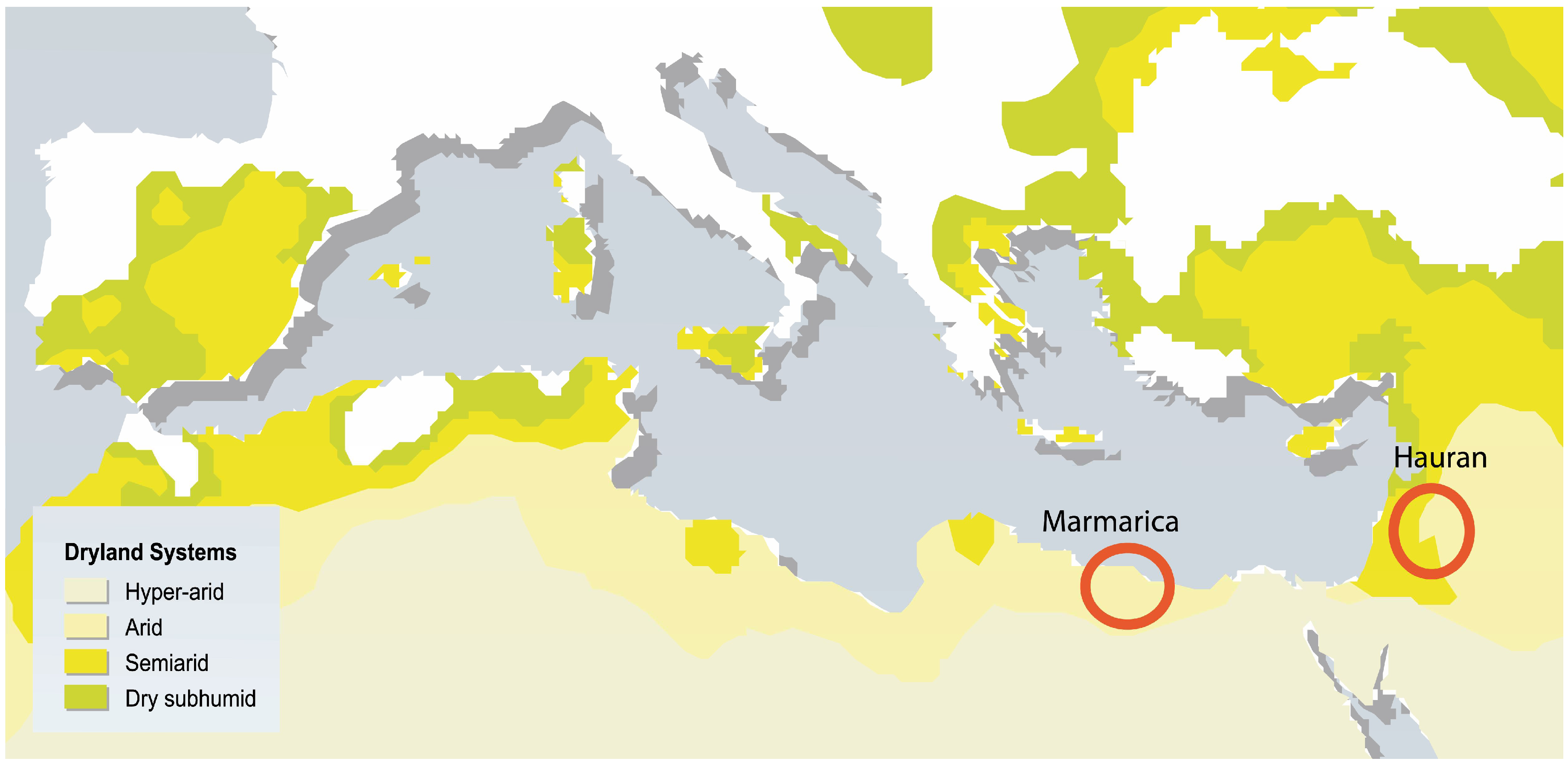
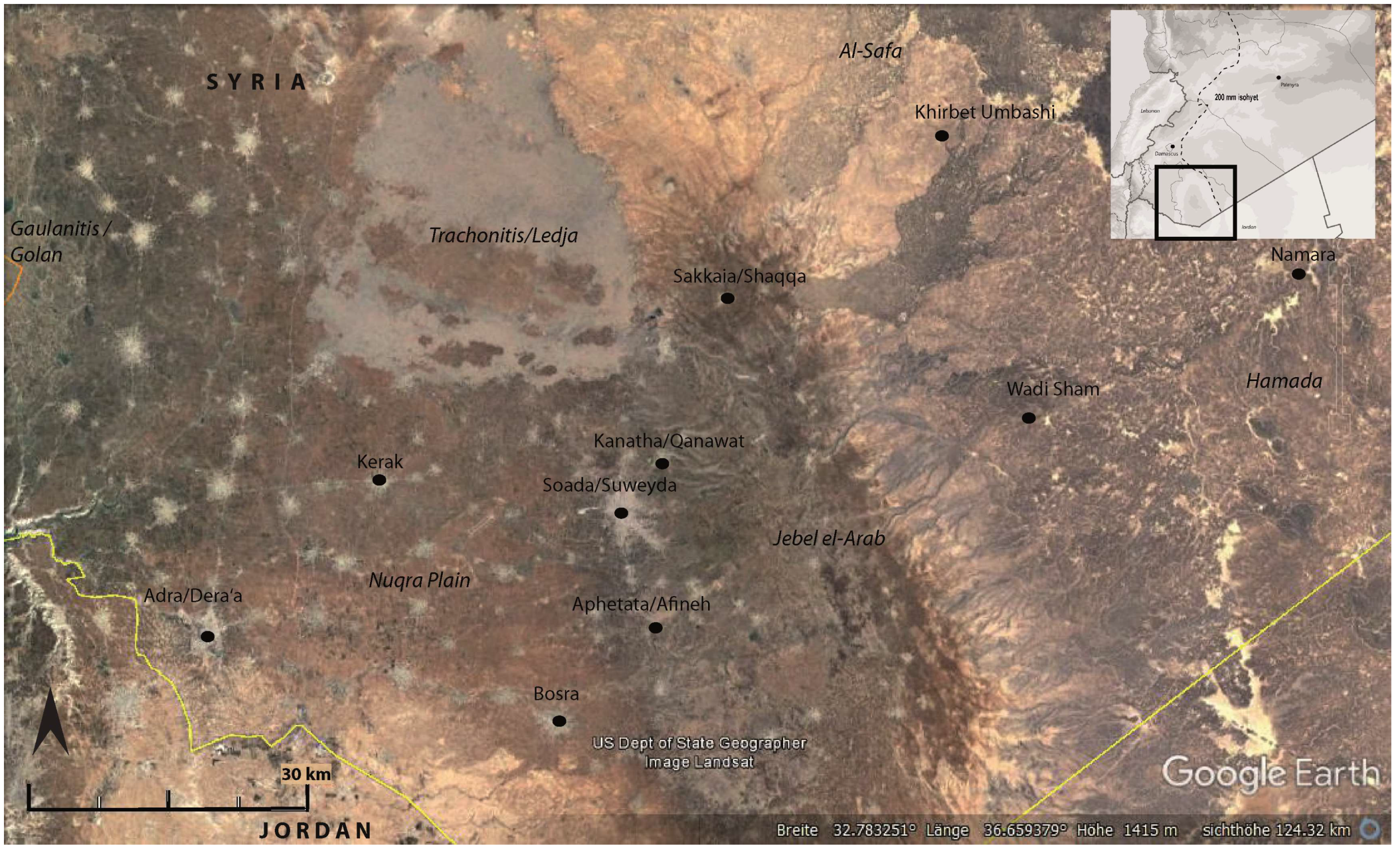
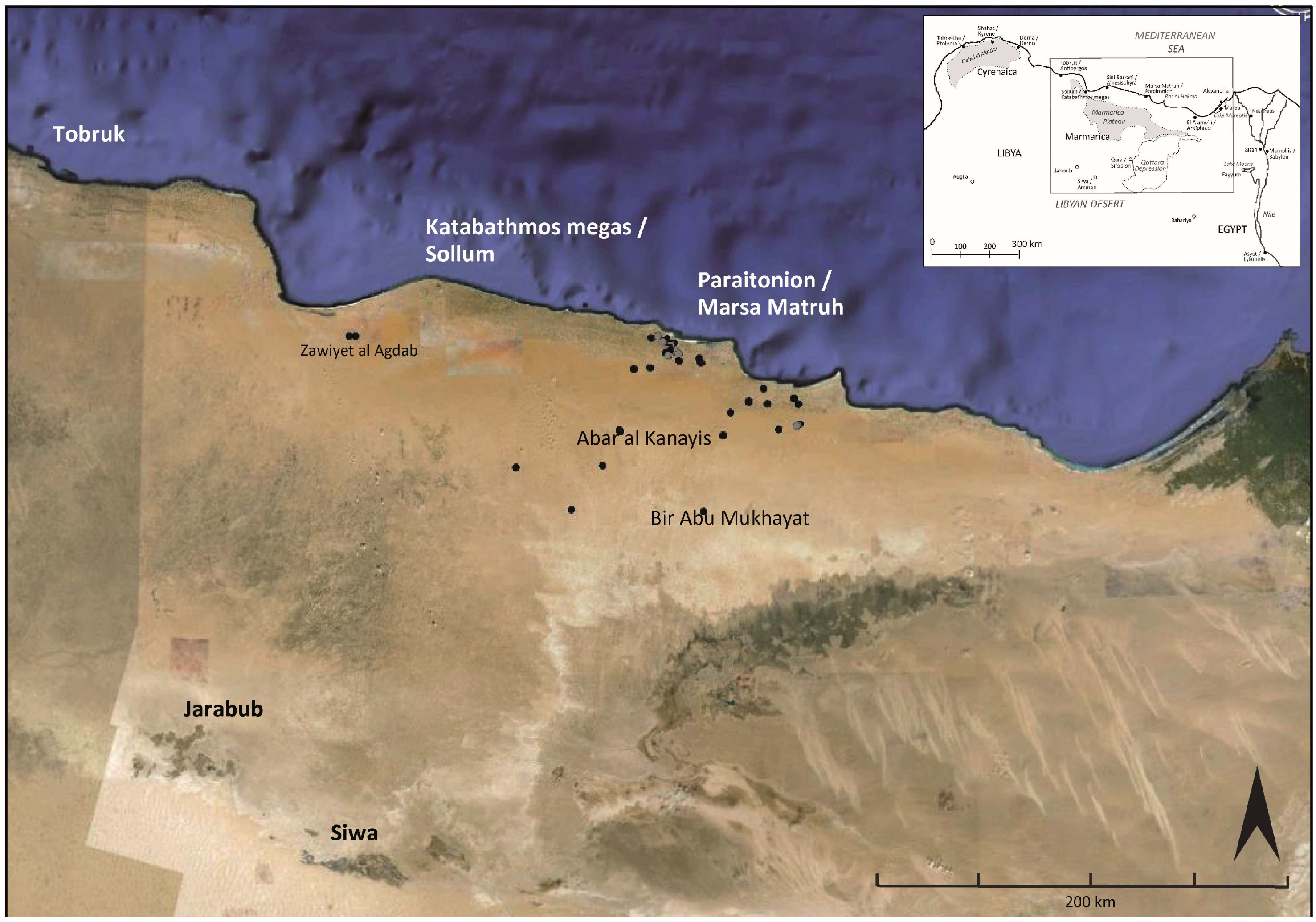
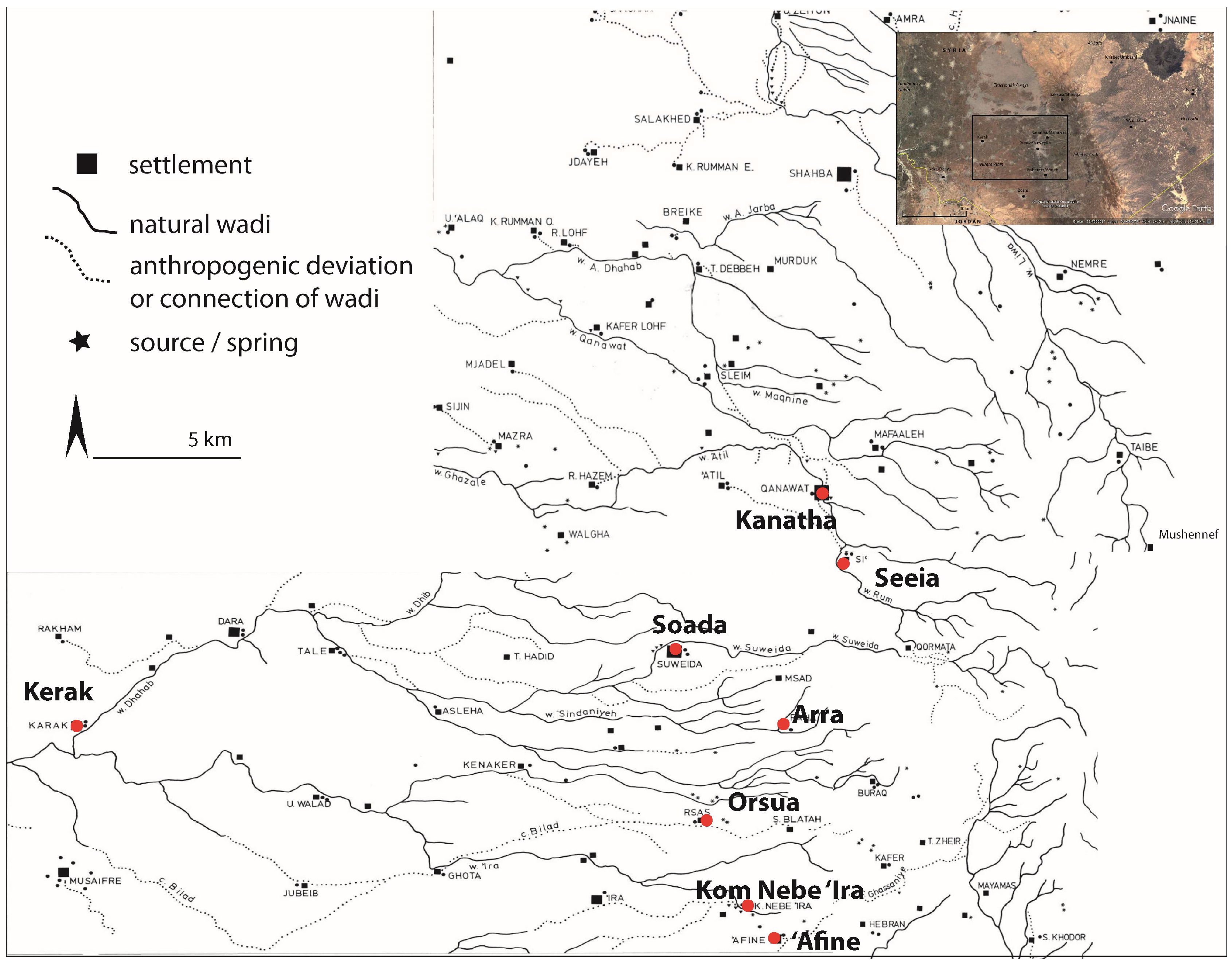
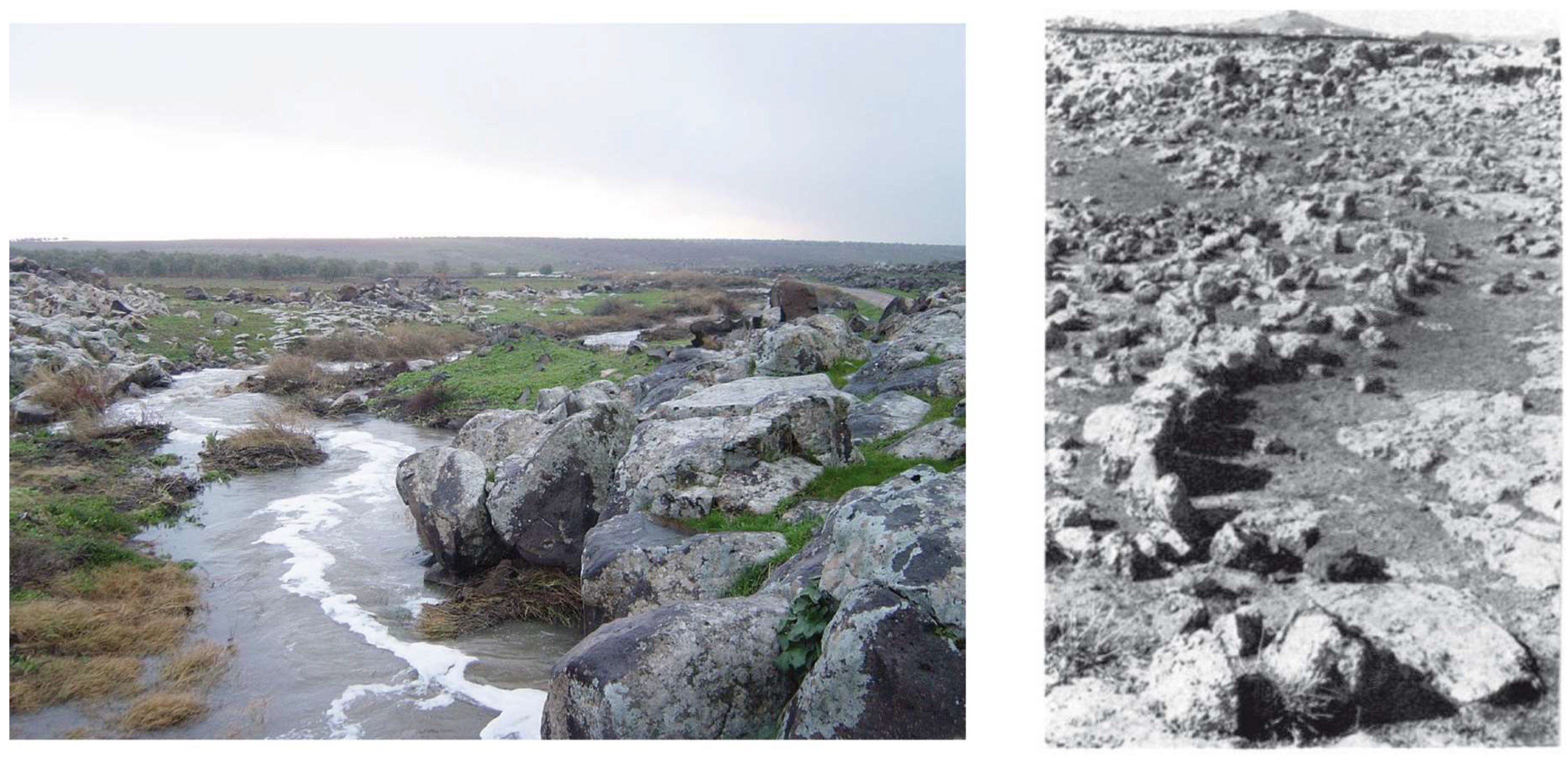
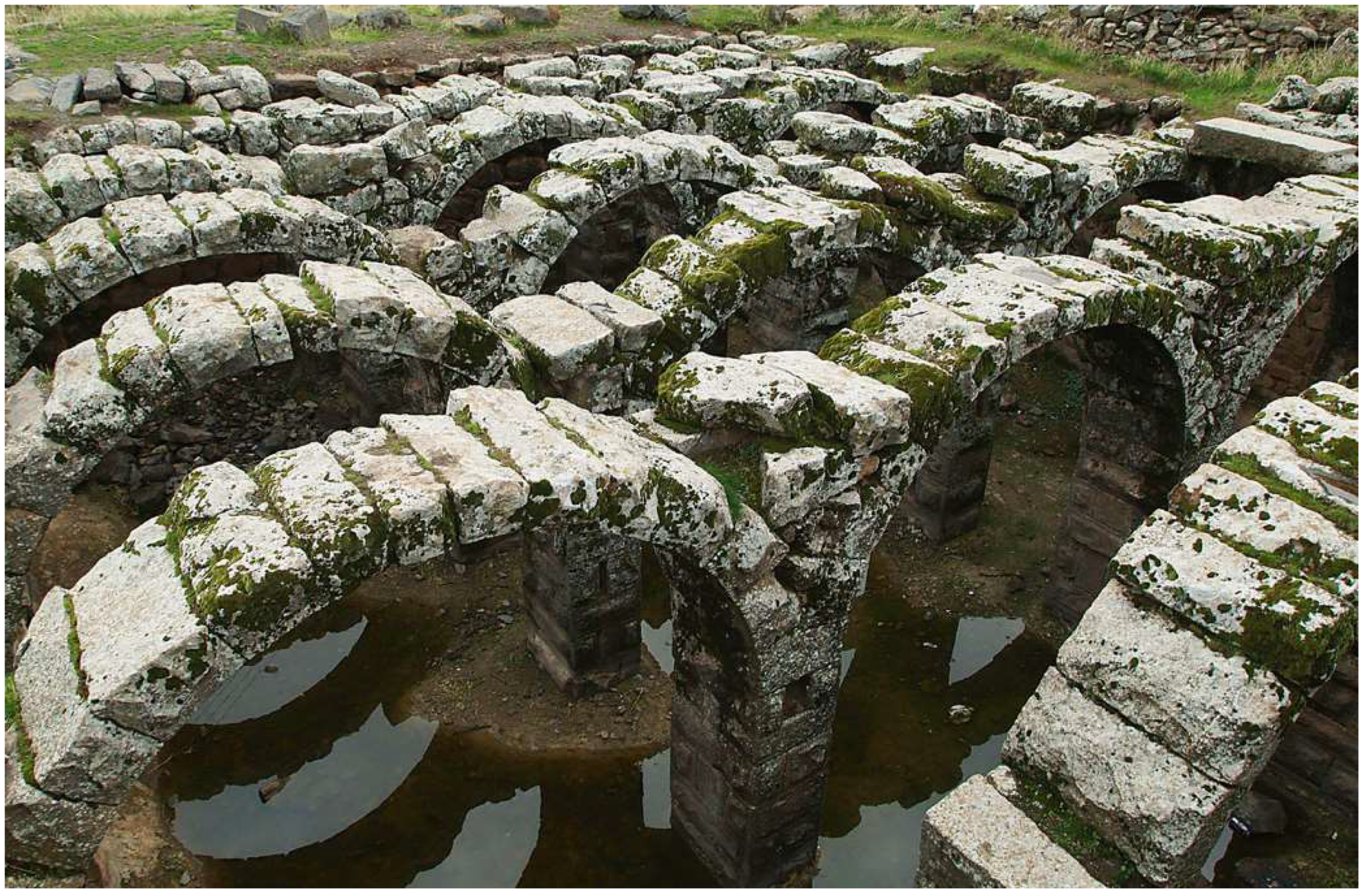

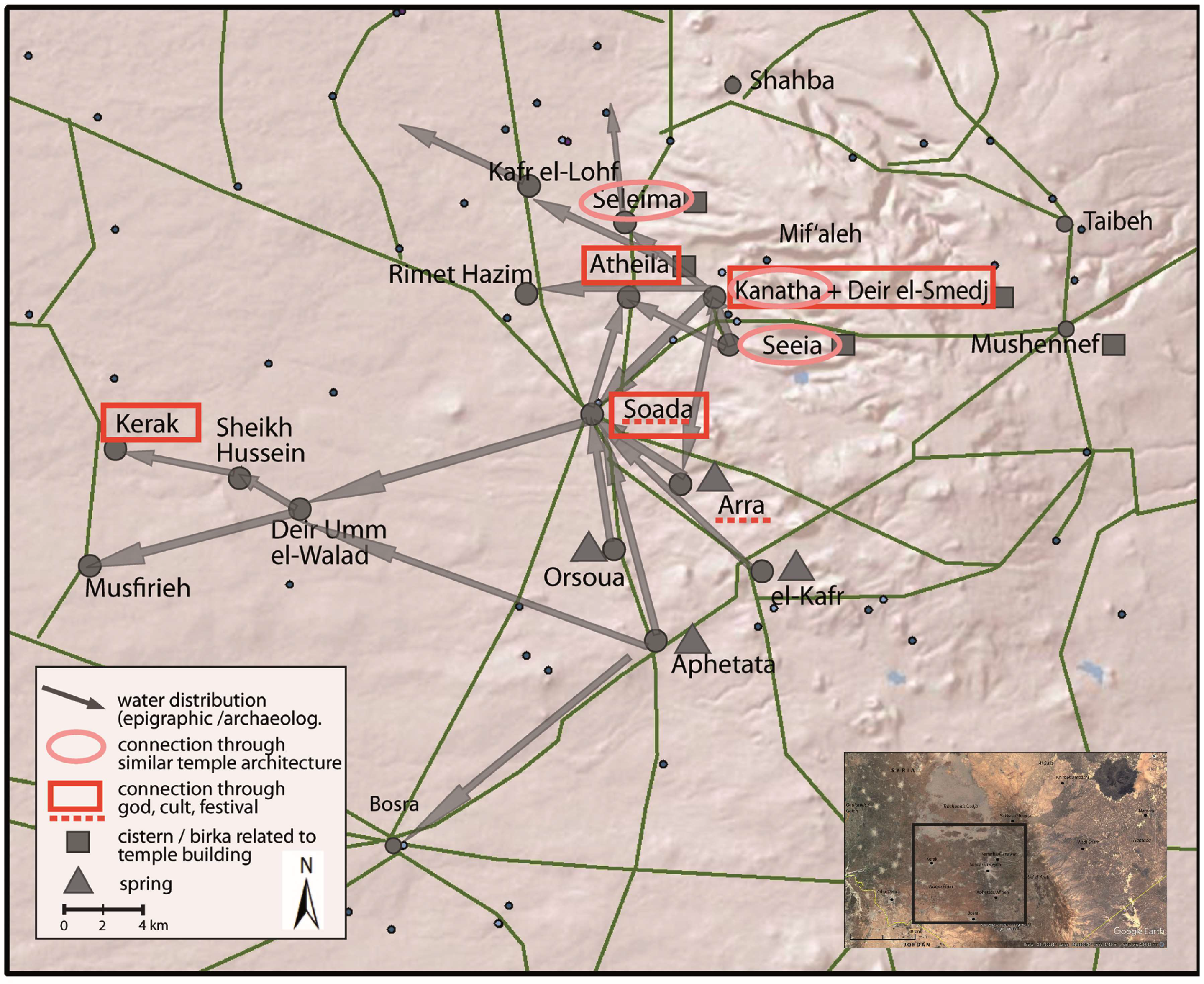
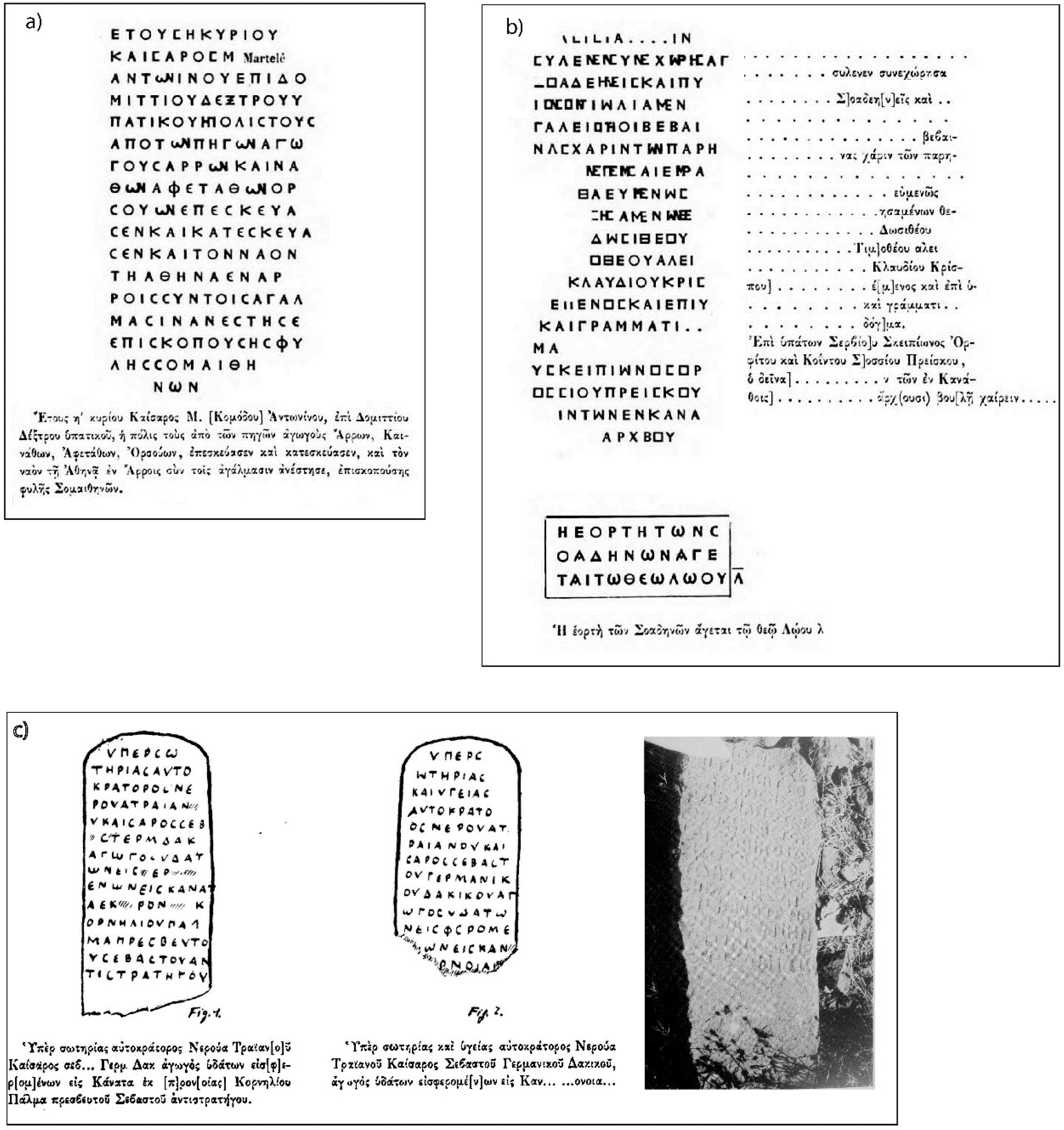
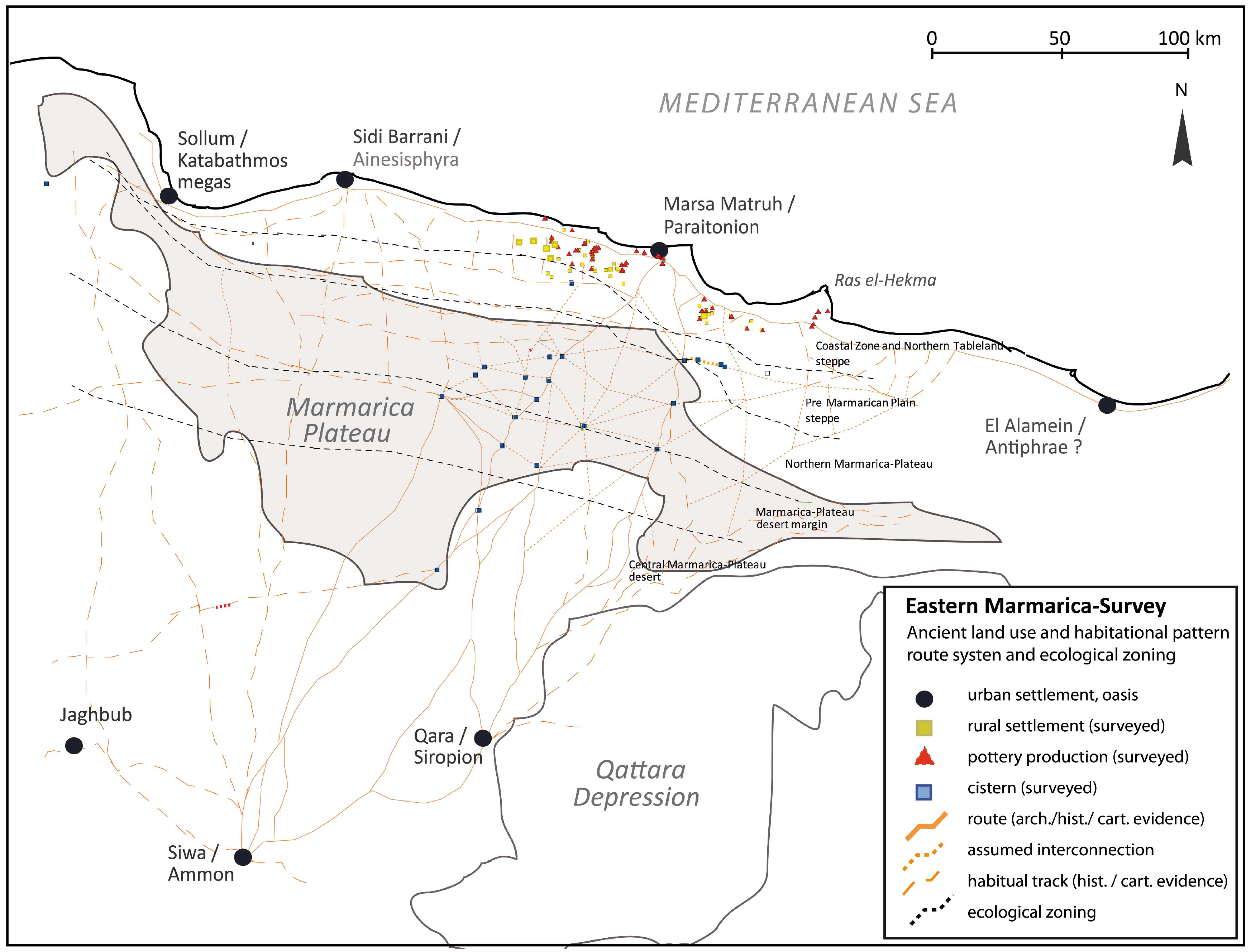
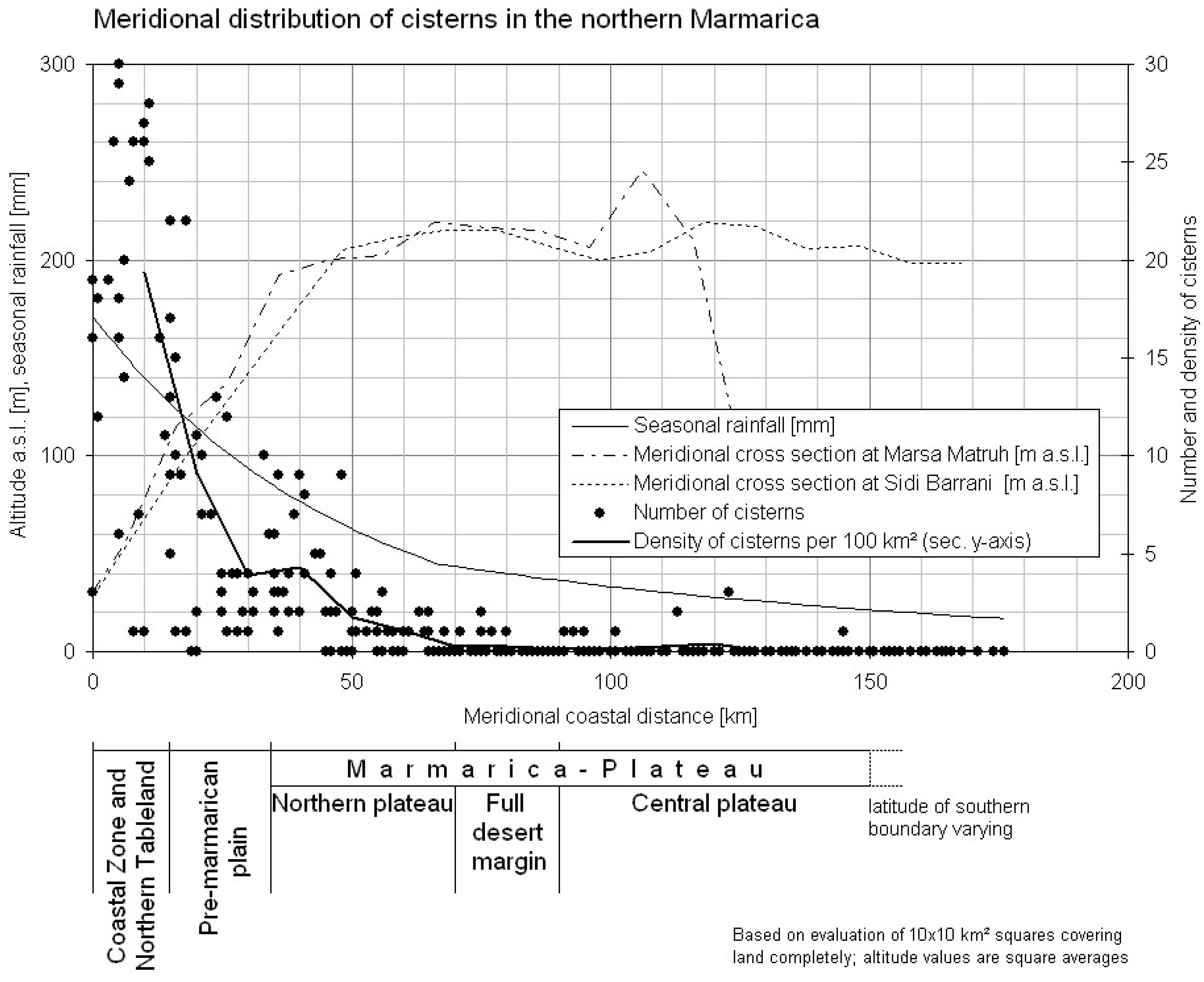
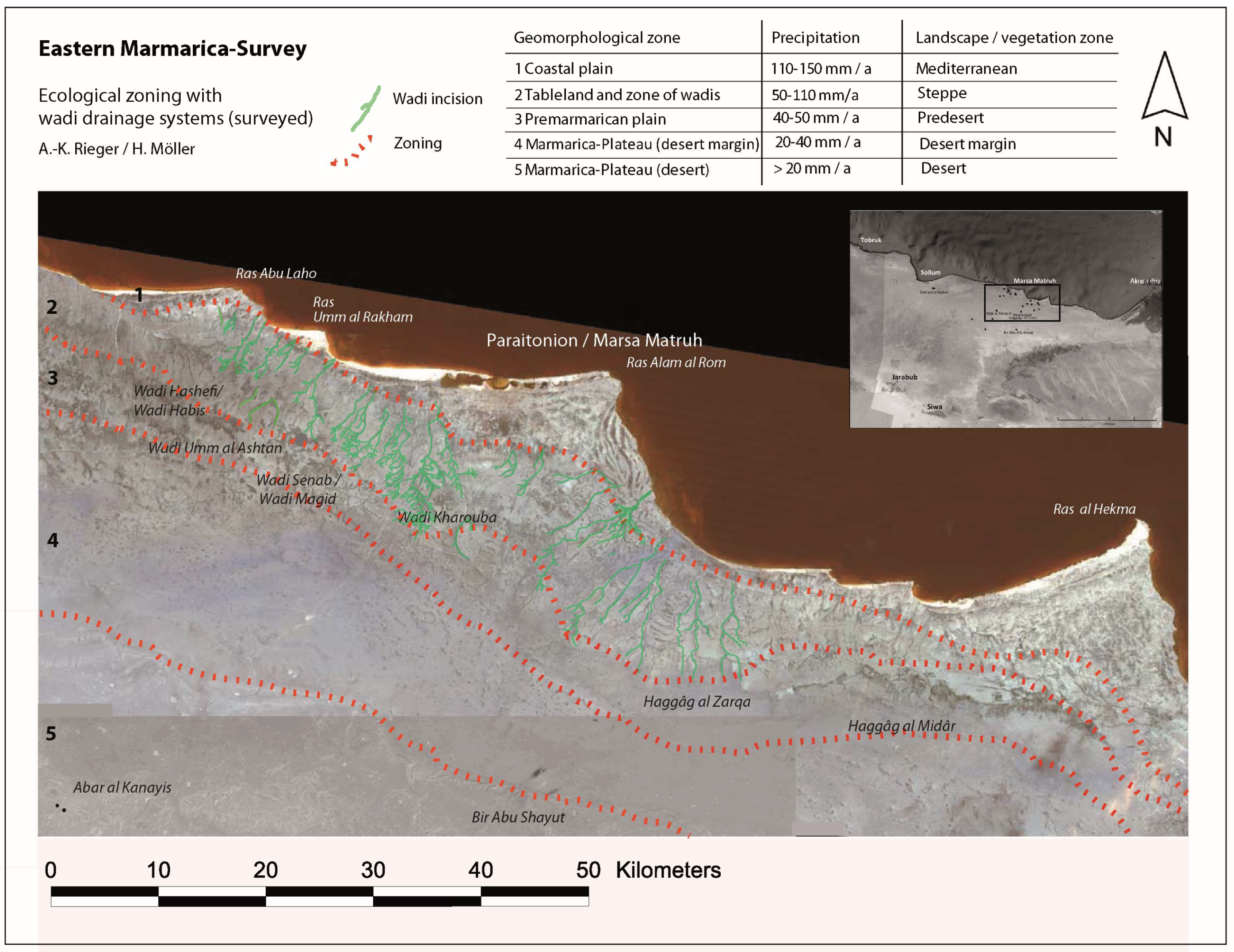
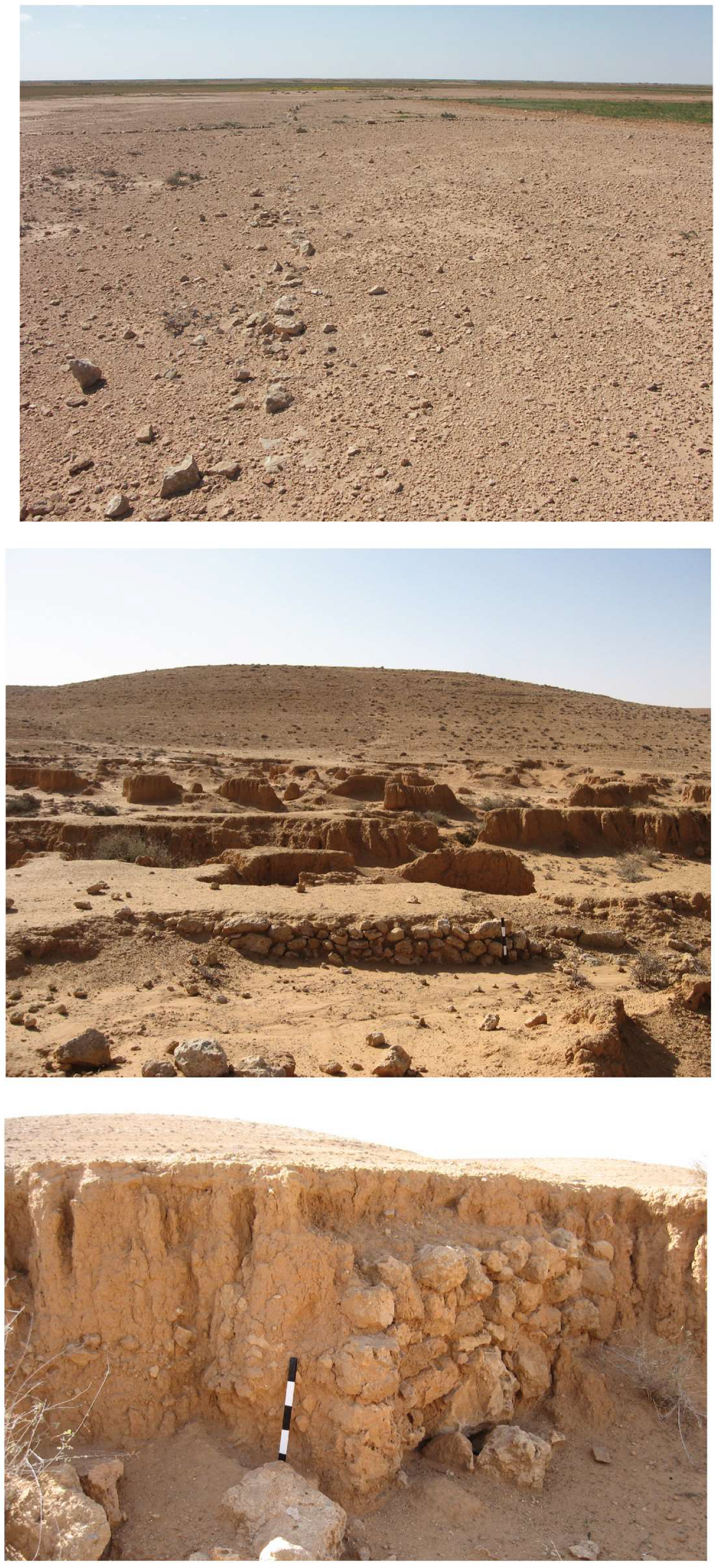
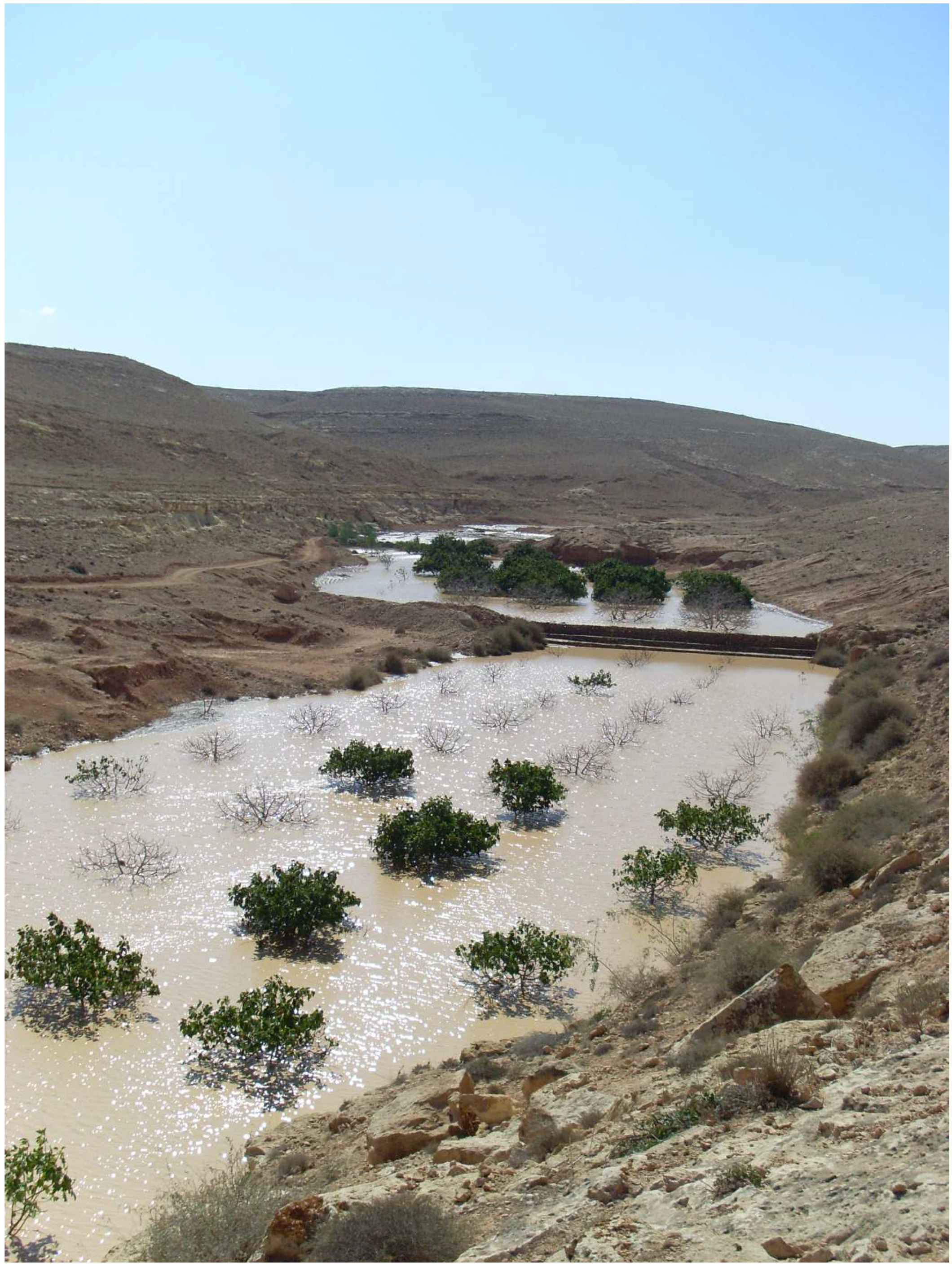
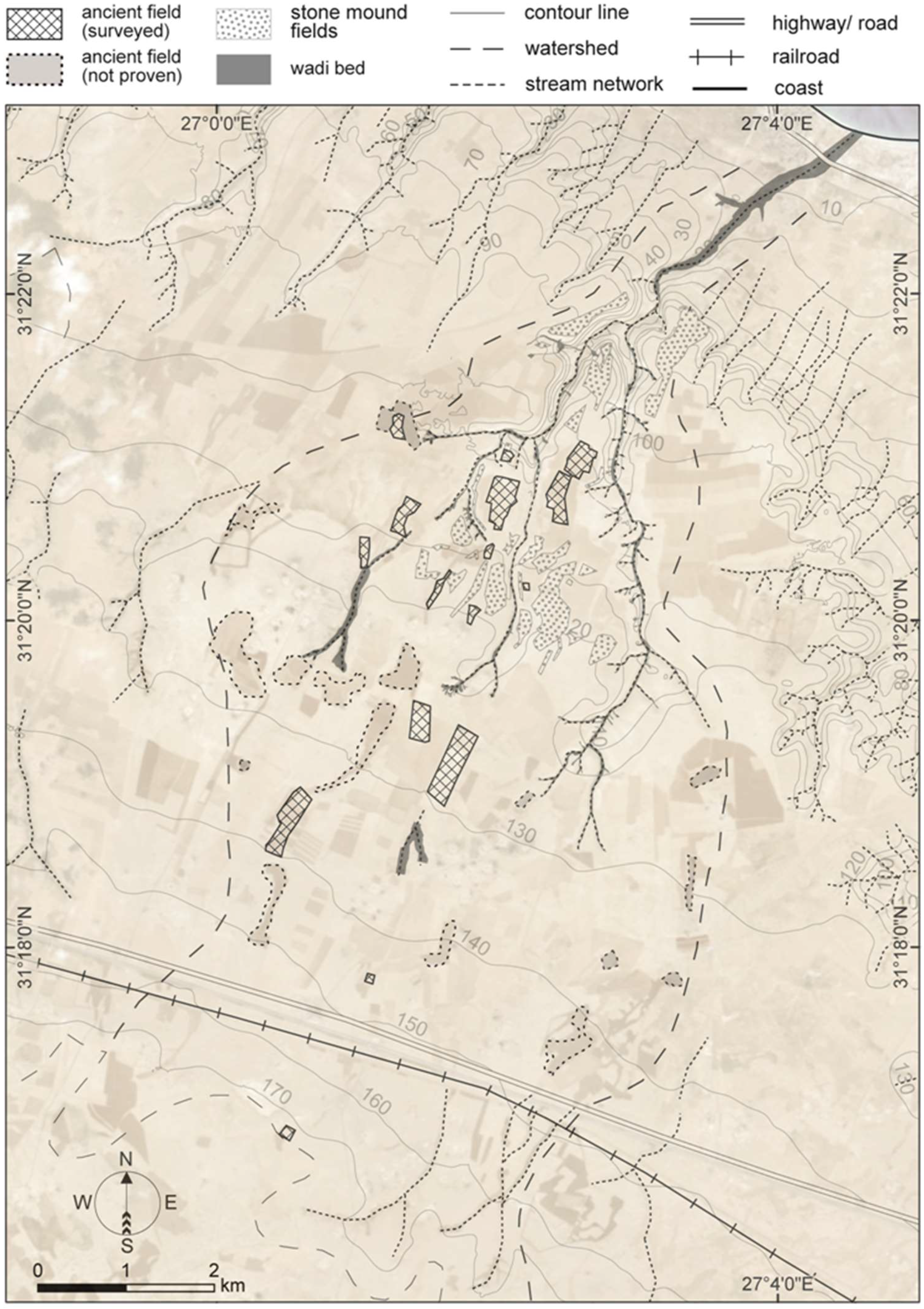

© 2018 by the author. Licensee MDPI, Basel, Switzerland. This article is an open access article distributed under the terms and conditions of the Creative Commons Attribution (CC BY) license (http://creativecommons.org/licenses/by/4.0/).
Share and Cite
Rieger, A.-K. ‘Un-Central’ Landscapes of NE-Africa and W-Asia—Landscape Archaeology as a Tool for Socio-Economic History in Arid Landscapes. Land 2019, 8, 1. https://doi.org/10.3390/land8010001
Rieger A-K. ‘Un-Central’ Landscapes of NE-Africa and W-Asia—Landscape Archaeology as a Tool for Socio-Economic History in Arid Landscapes. Land. 2019; 8(1):1. https://doi.org/10.3390/land8010001
Chicago/Turabian StyleRieger, Anna-Katharina. 2019. "‘Un-Central’ Landscapes of NE-Africa and W-Asia—Landscape Archaeology as a Tool for Socio-Economic History in Arid Landscapes" Land 8, no. 1: 1. https://doi.org/10.3390/land8010001
APA StyleRieger, A.-K. (2019). ‘Un-Central’ Landscapes of NE-Africa and W-Asia—Landscape Archaeology as a Tool for Socio-Economic History in Arid Landscapes. Land, 8(1), 1. https://doi.org/10.3390/land8010001




